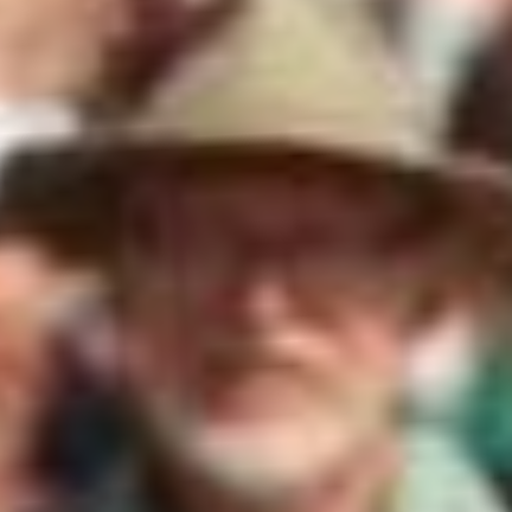
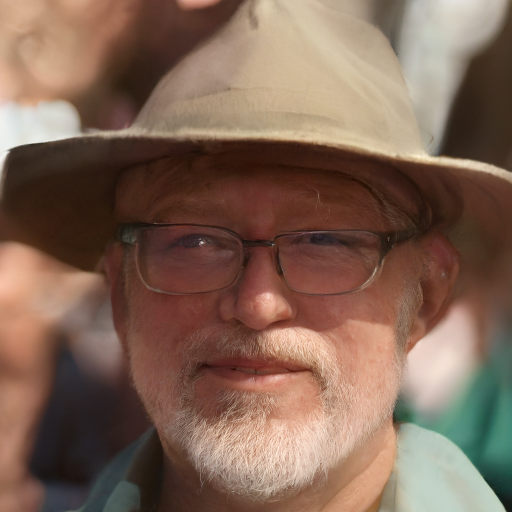
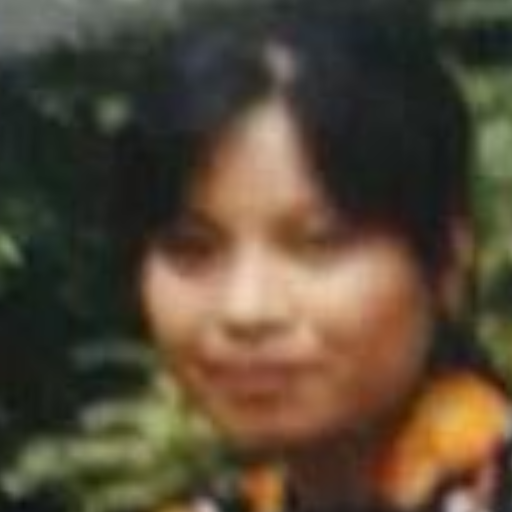
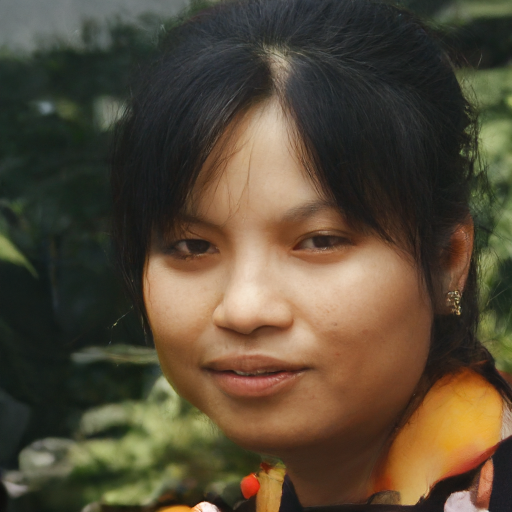

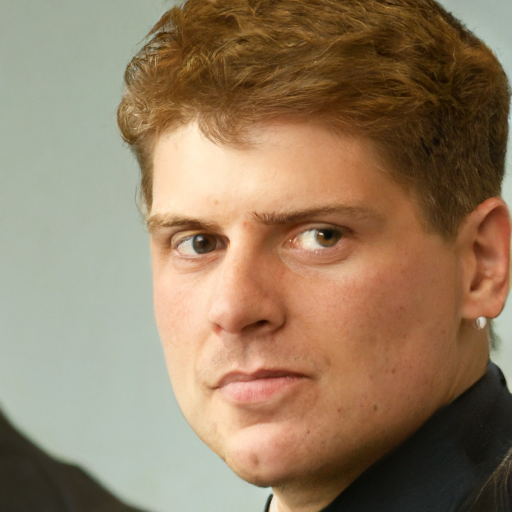
Technion
Technion
Technion
Technion
Technion
tl;dr: a framework for designing and evaluating real-world image restoration algorithms, including a degradation estimator, a P&P restoration method, and no-reference proxies for MSE and LPIPS






Real-world image restoration deals with the recovery of images suffering from an unknown degradation. This task is typically addressed while being given only degraded images, without their corresponding ground-truth versions. In this hard setting, designing and evaluating restoration algorithms becomes highly challenging. This paper offers a suite of tools that can serve both the design and assessment of real-world image restoration algorithms. Our work starts by proposing a trained model that predicts the chain of degradations a given real-world measured input has gone through. We show how this estimator can be used to approximate the consistency – the match between the measurements and any proposed recovered image. We also use this estimator as a guiding force for the design of a simple and highly-effective plug-and-play real-world image restoration algorithm, leveraging a pre-trained diffusion-based image prior. Furthermore, this work proposes no-reference proxy measures of MSE and LPIPS, which, without access to the ground-truth images, allow ranking of real-world image restoration algorithms according to their (approximate) MSE and LPIPS. The proposed suite provides a versatile, first of its kind framework for evaluating and comparing blind image restoration algorithms in real-world scenarios.
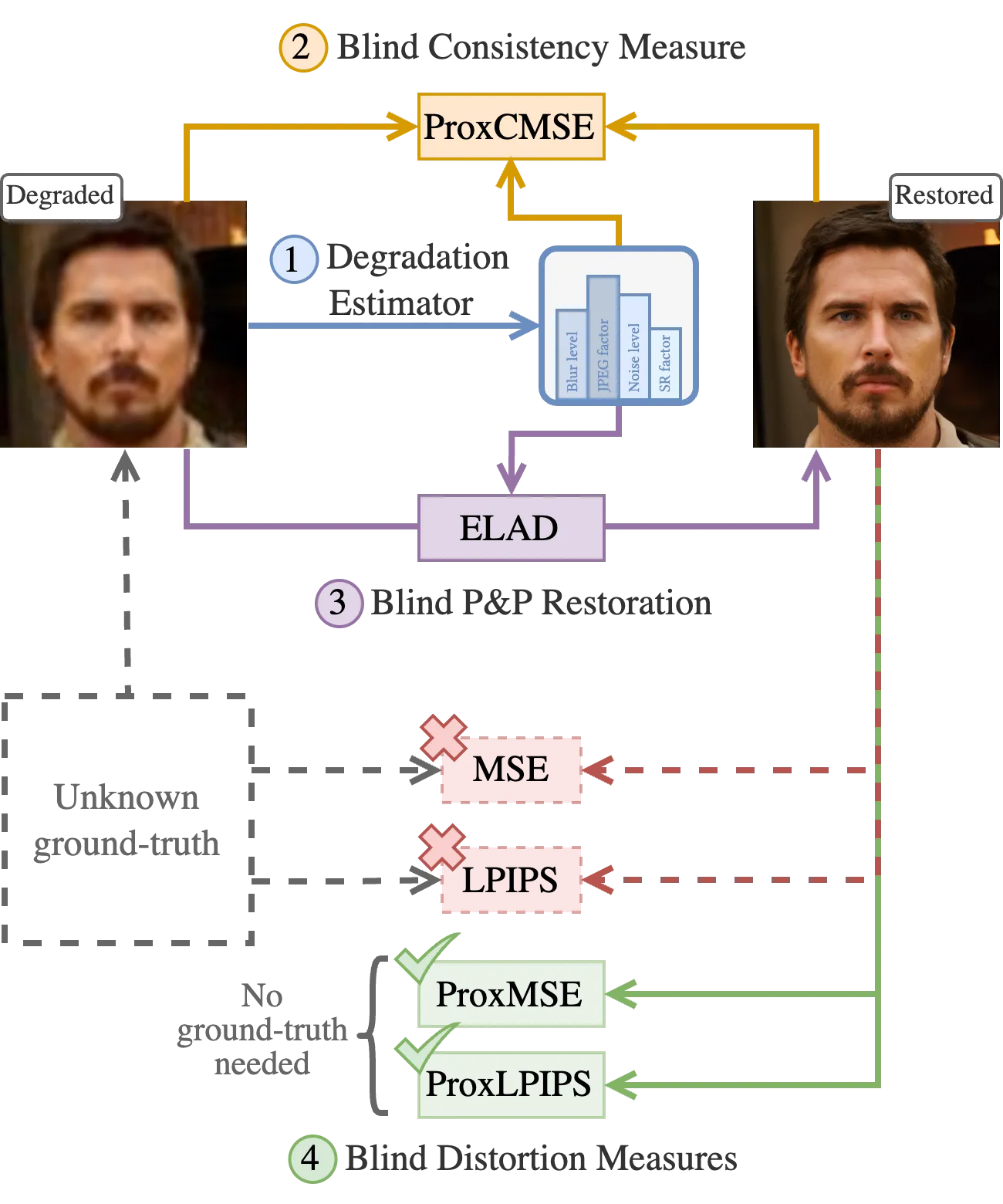
Paper overview. We propose 1 an estimator that predicts the degradations a real-world input has undergone. Using this, we 2 evaluate the consistency of reconstructed candidates and 3 develop a plug-and-play restoration algorithm. Finally, we propose 4 no-reference measures of distortion that mimic MSE and LPIPS, eliminating the need for ground-truth images.
We train a degradation estimator that predicts the parameters of the degradations applied to an image. The estimator achieves high accuracy on blind face degradations, as seen visually from the scatter plots and quantitatively from the R-squared scores.
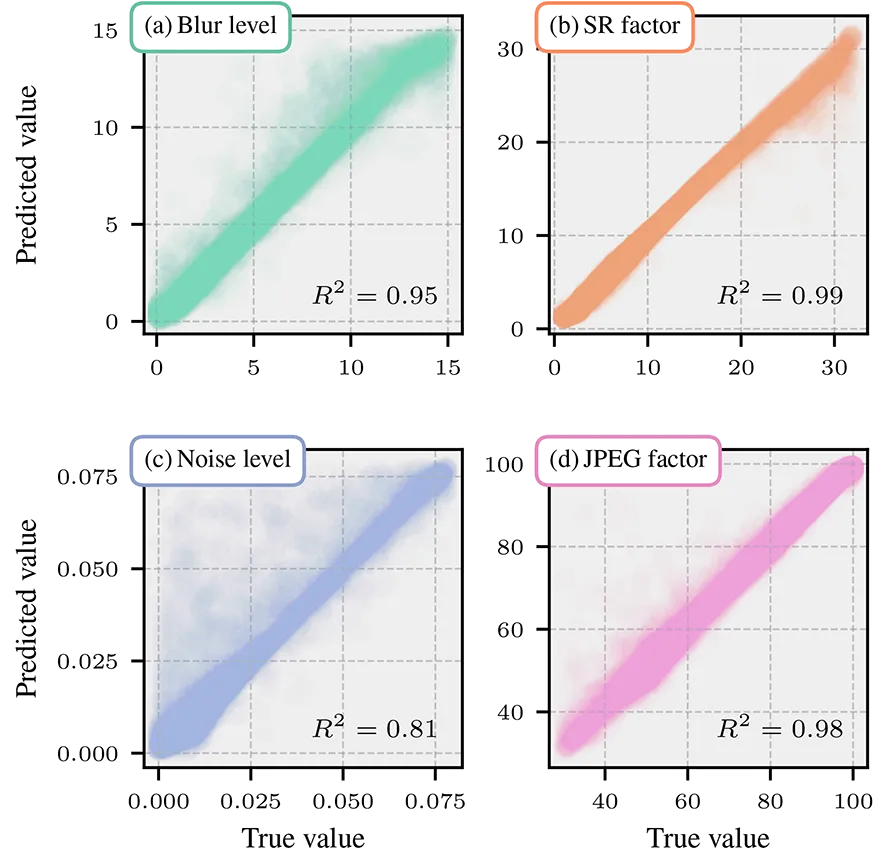
Using our degradation estimator, we reveal the degradations’ distribution in real-world datasets. This information can be utilized to better analyze such datasets and mimic them.
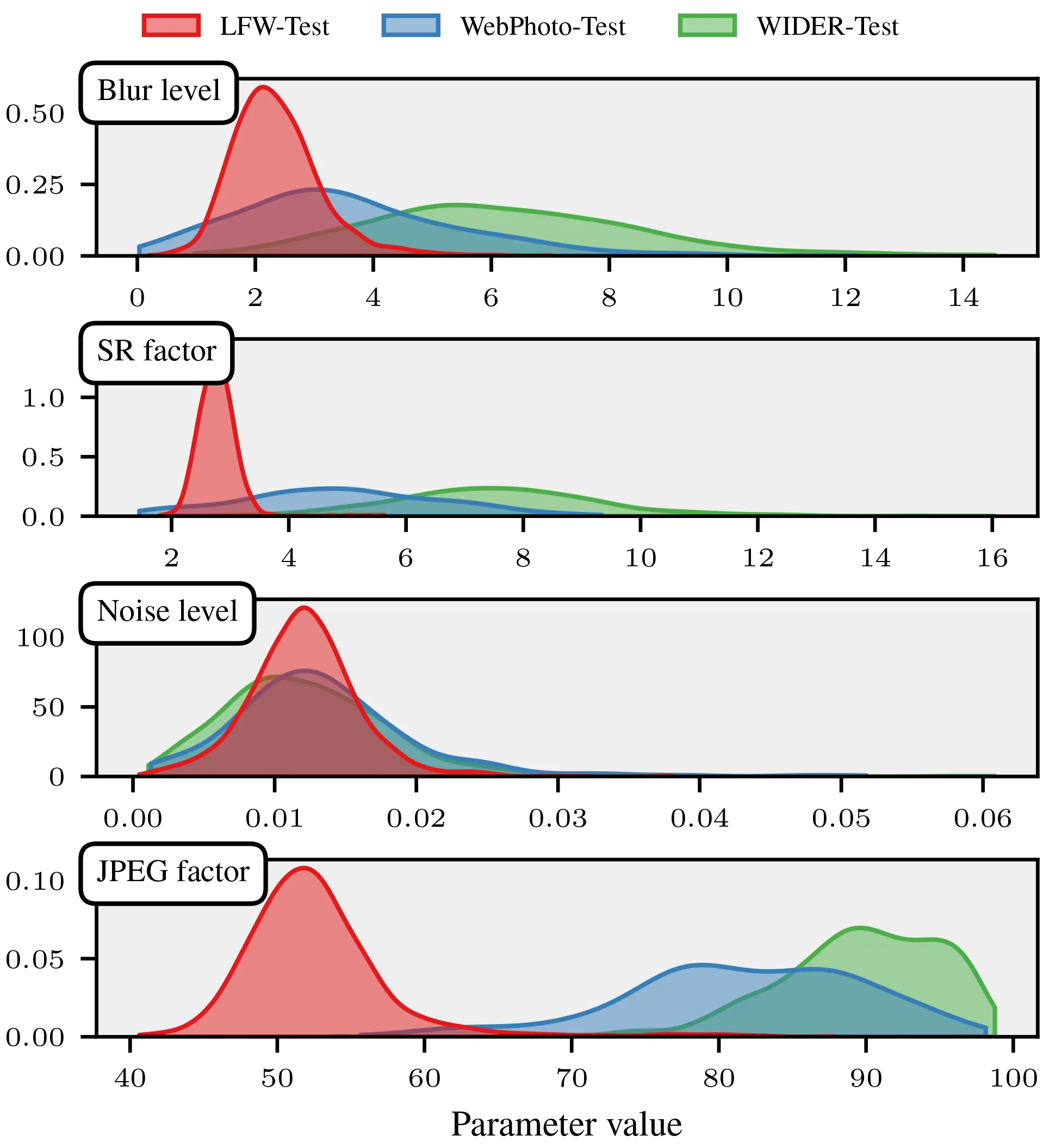
Using the degradation estimator and a pre-trained diffusion model, we construct a blind restoration algorithm. We extend prior P&P algorithms such as DPS to support more general degradations (where the noise is not the last operation) by approximating the likelihood using its first-moment.
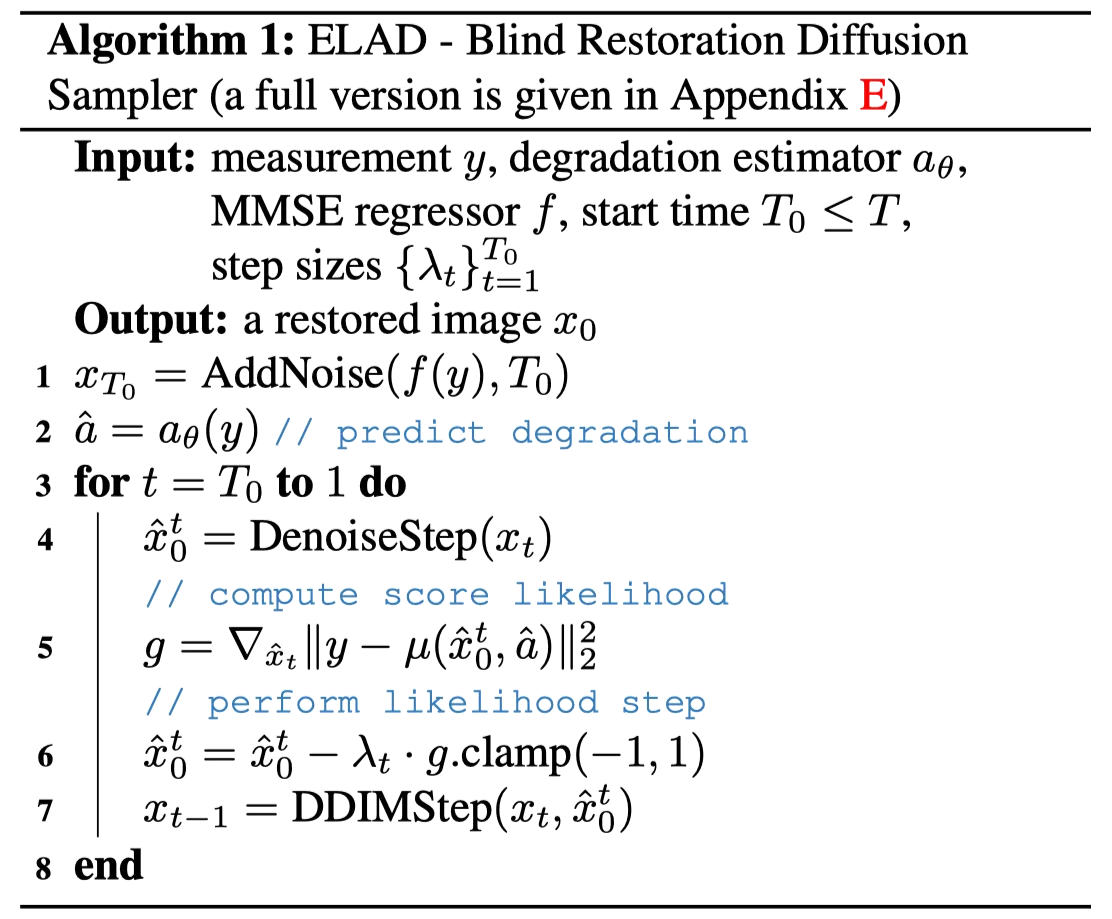
Given a pre-trained MMSE regressor (an trained NN), we show how to construct a no-reference distortion measure that mimics the ubiquitous MSE measure. Moreover, by training a simple LPIPS regressor, we construct a similar no-reference measure that mimics LPIPS. Using those measures, we can, for the first time, test the distortion performance of restoration algorithms with no need to access ground-truth data, which is typically unavailable in real-world blind settings.
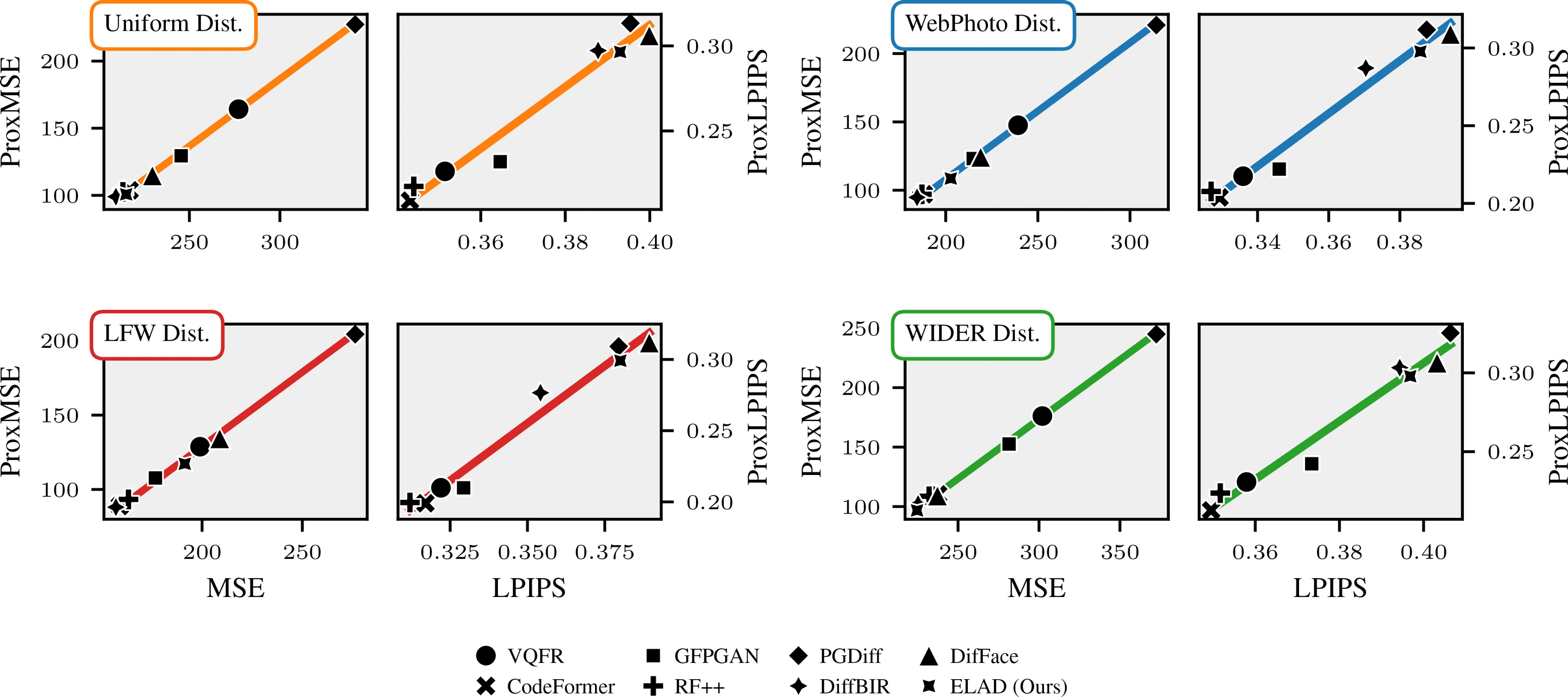
Proxy measures accuracy. The plots compare the proxy measures with their true counterparts, for several state-of-the-art methods evaluated on the synthetic CelebA-Test datasets. A linear regression line is drawn for better clarity. ProxMSE and ProxLPIPS rank methods similarly to the MSE and LPIPS measures without the need for ground-truth images.
@article{man2025proxiesdistortionconsistencyapplications,
title={Proxies for Distortion and Consistency with Applications for Real-World Image Restoration},
author={Sean Man and Guy Ohayon and Ron Raphaeli and Michael Elad},
year={2025},
journal={arXiv preprint arXiv:2501.12102},
url={https://arxiv.org/abs/2501.12102},
}